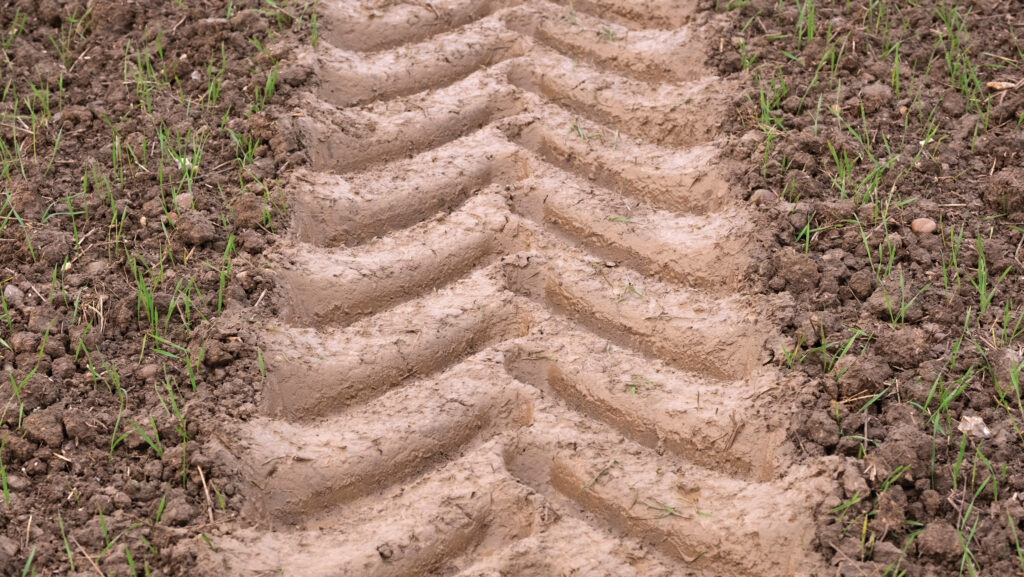4 ways to solve common soil issues on arable farms
 © Tim Scrivener
© Tim Scrivener Farmers are often swamped with different soil tests, nutrient analysis and data sets that flag up potential limiting factors on farm.
After initial observations, how can these results be effectively used to resolve problems, without overwhelming decision-making?
We hear from three industry experts who unpick four common indicators that can be used to troubleshoot and identify limiting factors on farm.
See also: OSR bounces back, with good yields and fresh optimism
1. Compaction layer
Compaction issues can be all too common on farmland, typically on headlands that experience significant trafficking or field areas struck by waterlogging.
Once compaction has been identified, what sort of remedial action is required?
Tim Williams, mixed farmer and regenerative agriculture adviser and founder of Earth Farmers, first recommends farmers take a step back and think about the situation in context.
“What sort of land and management practice has occurred? Do we need to extend the rotation? Are we pushing soils too hard? Do we need to diversify species? Does the choice of machinery need to change?”.
These are all questions that need addressing, notes Tim.
Cultivation practice is key. Minimising tillage as much as possible isn’t always the right decision, he says. Conversely, simply ploughing compaction pans over isn’t the answer either.
“If we were to plough in a compaction layer, we are just burying any potential remaining soil biology on the soil surface deeper into the ground.
“Any beneficial microbes or fungi will be turned over, so we are essentially starting from zero,” he says.
“Remember it’s not about minimising tillage, but optimising tillage.
“Sometimes long-term minimum-tillage can unbalance the soil equilibrium and a cultivation pass is required to settle this.”
He notes that a subsoiler is an effective method at reducing compaction.
“Modifying the machine to add a carbon source such as molasses down the leg of the subsoiler to feed biology can be beneficial,” he says.
When it comes to the wider rotation, integrating species-rich cover crops can help break up compaction.
“Including fine-rooted herbs in cover mixes can help relieve compaction, supercharging photosynthesis, with a host of root exudates going into the soil,” explains Tim.
Ian Robertson, head of soil at agronomy firm Hutchinsons, recommends farmers take a soil analysis test, to address potential mineral imbalances in the soil, which could be causing compaction.
For example, high concentrations of sodium can cause clay particles to repel each other, leading to increased soil density.
Excess magnesium can bind clay particles tightly, reducing pore space.
“Too often, farmers control the symptom of compaction, rather than addressing the cause. If the chemistry is not in line, it could quickly be pulled back into a compacted state,” says Ian.
In this situation, going through with a subsoiler in high magnesium soils may not be what the soil needs. An application of gypsum would help flocculate the soil and remedy it back to health.
2. Increasing inputs, decreasing yields
In a situation where a cropping system requires increasing inputs but with decreasing yields, the relationship between plant and mycorrhizal fungi has been broken.
Jed Soleiman, a PhD student at the University of Oxford and researcher at the Centre for High Carbon Capture Cropping based at Cotswold Seeds and FarmED, says:
“This could be for numerous reasons, but the most common is due to the over use of nitrogen fertilisers.”
“Mycorrhizal fungi help plants access nutrients like phosphorus and nitrogen, but where plants receive excess fertiliser, the symbiotic relationship is disrupted,” explains Jed.
With a plentiful supply of nitrogen, the plant reduces the amount of carbon provided to the fungi in the form of sugars.
This weakens the fungal network and ultimately leads to fungal decline. Soil biology is ultimately depleted, with low counts of both macro and micro fauna and few pore spaces to host microbial life.
Nutrients become locked up and the system becomes more reliant on artificial inputs, which exacerbates the problem.
Jed points to the monoculture control wheat trial plot at FarmED, which has been growing winter wheat for 70 years.
“This is the perfect example of a system receiving increasing amount of inputs to maintain output. The field is like a sterile laboratory, with no life. It needs more and more additions to keep going,” he explains.
In this situation, Jed recommends some sort of reset to kick-start the system back into action.
“All ecosystems need disturbances at some point. Disturbance does not necessarily have to have negative ecological impacts.
“When carried out in a measured and managed way this can in fact be very beneficial,” he says.
Jed recommends a major rotation shift-up, perhaps integrating herbal leys and livestock into the rotation to break up compaction and diversify the soil.
“It’s all about getting back to basics and allowing soil to breathe and biology to thrive. Sometimes a more long-term view is needed to break short-term management issues.”
3. Low Brix reading
A Brix reading measures the concentration of dissolved solids – primarily sugars – in plant sap. It essentially measures the plant’s ability to photosynthesise.
A low Brix reading in a crop indicates a lower concentration of dissolved solids, suggesting a potential nutrient deficiency, which could be limiting photosynthesis.
However, Ian raises a common misconception that farmers overlook when taking Brix readings. “Is it a sunny day?” he says.
“If a grower has a low Brix reading, it could simply be a lack of sunshine which is limiting photosynthesis. If the sun isn’t shining, sugar production will be lower and so too the Brix reading.”
The wider context must be taken in to account when looking at results. “Sometimes farmers are looking for mineral or biological solutions, when variations occur naturally.”
If a Brix reading remains low and there is adequate sunlight, it is likely there is a nutritional imbalance, which is limiting sugar production.
In which case, Ian recommends following up with a tissue or sap test to delve into greater nutritional detail and address potential deficiencies.
“Growers are now very much focused on the biological side of soils and crops, but the chemical and mineral aspects are still very much important,” he says.
4. Capping on sandy soils
Sand and silt soils are at risk of soil capping during heavy rainfall. Ian talks of a Norfolk farm with very high sand content that was suffering from this.
“The farmer was using a set of Cambridge rolls to break a 10mm cap, which did a perfect job. But when it rained again, the same issue persisted,” he says.
“We quickly realised we were treating the symptoms rather than the cause. We needed something to physically stop the rain from hitting the soil and causing the cap.”
For example, simply leaving the stubble slightly longer at harvest would dissipate the intensity of the rain splash, so it would slowly dribble down the stubble rather than hitting the ground directly.
Overwinter cover cropping can be an easy win to reduce capping, acting as a protective layer for soil. The addition of organic manures can also help boost soil biology levels, and reduce capping impacts.

